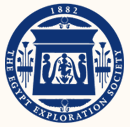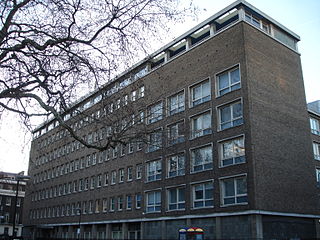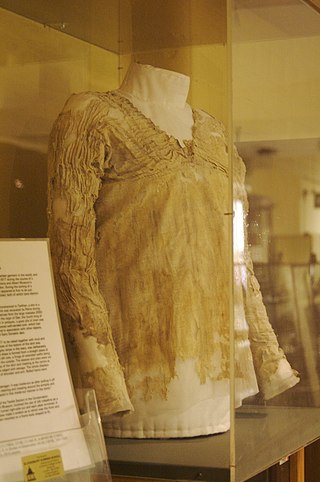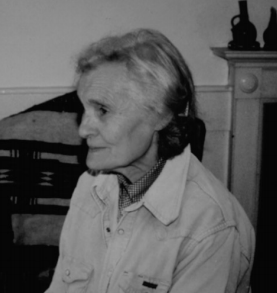Related Research Articles

Sir William Matthew Flinders Petrie,commonly known as simply Sir Flinders Petrie,was a British Egyptologist and a pioneer of systematic methodology in archaeology and the preservation of artefacts. He held the first chair of Egyptology in the United Kingdom,and excavated many of the most important archaeological sites in Egypt in conjunction with his wife,Hilda Urlin. Some consider his most famous discovery to be that of the Merneptah Stele,an opinion with which Petrie himself concurred. Undoubtedly at least as important is his 1905 discovery and correct identification of the character of the Proto-Sinaitic script,the ancestor of almost all alphabetic scripts.

Peter John Ucko FRAI FSA was an influential English archaeologist. He served as Director of the Institute of Archaeology at University College London (UCL),and was a Fellow of both the Royal Anthropological Institute and the Society of Antiquaries. A controversial and divisive figure within archaeology,his life's work focused on eroding western dominance by broadening archaeological participation to developing countries and indigenous communities.

The Egypt Exploration Society (EES) is a British non-profit organization. The society was founded in 1882 by Amelia Edwards and Reginald Stuart Poole in order to examine and excavate in the areas of Egypt and Sudan. The intent was to study and analyze the results of the excavations and publish the information for the scholarly world.

UCL's Institute of Archaeology is an academic department of the Social &Historical Sciences Faculty of University College London (UCL) which it joined in 1986 having previously been a school of the University of London. It is currently one of the largest centres for the study of archaeology,cultural heritage and museum studies in the world,with over 100 members of staff and 600 students housed in a 1950s building on the north side of Gordon Square in the Bloomsbury area of Central London.

The Petrie Museum of Egyptian Archaeology in London is part of University College London Museums and Collections. The museum contains 80,000 objects,making it one of the world's largest collections of Egyptian and Sudanese material. It is designated under the Arts Council England Designation Scheme as being of "national and international importance".
The Gerzeh culture,also called Naqada II,refers to the archaeological stage at Gerzeh,a prehistoric Egyptian cemetery located along the west bank of the Nile. The necropolis is named after el-Girzeh,the nearby contemporary town in Egypt. Gerzeh is situated only several miles due east of the oasis of Faiyum.

John Garstang was a British archaeologist of the Ancient Near East,especially Egypt,Sudan,Anatolia and the southern Levant. He was the younger brother of Professor Walter Garstang,FRS,a marine biologist and zoologist. Garstang is considered a pioneer in the development of scientific practices in archaeology as he kept detailed records of his excavations with extensive photographic records,which was a comparatively rare practice in early 20th-century archaeology.

Gertrude Caton Thompson,was an English archaeologist at a time when participation by women in the discipline was uncommon. Much of her archaeological work was conducted in Egypt. However,she also worked on expeditions in Zimbabwe,Malta,and South Arabia. Her notable contributions to the field of archaeology include creating a technique for excavating archaeological sites and information on Paleolithic to Predynastic civilizations in Zimbabwe and Egypt. Caton Thompson held many official positions in organizations such as the Prehistoric Society and the Royal Anthropological Institute.
Below are notable events in archaeology that occurred in 1884.

The Gebel el-Arak Knife,also Jebel el-Arak Knife,is an ivory and flint knife dating from the Naqada II period of Egyptian prehistory,showing Mesopotamian influence. The knife was purchased in 1914 in Cairo by Georges Aaron Bénédite for the Louvre,where it is now on display in the Sully wing,room 633. At the time of its purchase,the knife handle was alleged by the seller to have been found at the site of Gebel el-Arak,but it is today believed to come from Abydos.
Tessa Wheeler was an archaeologist who made a significant contribution to excavation techniques and contributed to the setting up of major British archaeological institutions after the Second World War.

Kate Bradbury Griffith was a British Egyptologist who assisted in the early development of the Egypt Exploration Society and the Department of Egyptology at University College London (UCL). Bradbury was born in Ashton-under-Lyne,near Manchester,UK,to Elizabeth Ann Tomlins and businessman Charles Timothy Bradbury.
Violette Lafleur was a Canadian conservator and curator for the Department of Egyptology and Petrie Museum of Egyptian Archaeology,University College London.

The Tarkhan Dress,named for the Tarkhan cemetery south of Cairo in Egypt where it was excavated in 1913,is an over 5000 year old linen garment that was confirmed as the world's oldest piece of woven clothing.
Elise Jenny Baumgartel was a German Egyptologist and prehistorian who pioneered the study of the archaeology of predynastic Egypt.

Joan Crowfoot Payne was a British archaeologist specialising in the study of lithics from the Ancient Near East and worked as Cataloguer of the Ancient Egyptian collection at the Ashmolean Museum in Oxford.
Myriam Seco Álvarez is a Spanish archaeologist and Egyptologist. A distinguished authority in those fields,the author of several reference books,and responsible for excavations in the Middle East and Egypt,she has launched and directed important archaeological projects,including the excavation and restoration of the mortuary temple of Pharaoh Thutmose III. The so-called "Spanish Indiana Jones",she has had a prolific professional career and a broad international presence.

Winifred M. Crompton was a British Egyptologist and curator at the Manchester Museum.
Amara Thornton is a historian of archaeology. Her work focuses on British archaeologists in the Middle East and Eastern Mediterranean during the late 19th and early 20th centuries. She situates archaeology within its broader historical context,including the history of tourism,the history of publishing and popular media,the history of education,government policies and women's history. She is an Honorary Research Associate at UCL.
References
- ↑ "Alice Stevenson". The Conversation. 17 February 2016. Retrieved 4 January 2018.
- 1 2 3 "Alice Stevenson". UCL Institute of Archaeology. Archived from the original on 17 December 2017. Retrieved 4 January 2018.
- 1 2 Ward, C. (2017). "Interview with Dr. Alice Stevenson". Papers from the Institute of Archaeology. 27 (1): 13. doi: 10.5334/pia-526 .
- ↑ "World Archaeology at the Pitt Rivers Museum: a characterization". Pitt Rivers Museum. Retrieved 4 January 2018.
- ↑ Stevenson, A., ed. (2015). The Petrie Museum of Egyptian Archaeology: Characters and Collections. UCL Press.
- ↑ Lobell, Jarrett A. (May 2016). "Dressing for the Ages". Archaeology . No. 1605. Retrieved 4 January 2018.
- ↑ Stevenson, Alice; Dee, Michael W. (February 2016). "Confirmation of the world's oldest woven garment: the Tarkhan dress". Antiquity . 90 (349). Retrieved 31 October 2018.
- ↑ Stevenson, Alice (13 July 2017). "Why archaeological antiquities should not be sold on the open market, full stop". The Conversation. Retrieved 4 January 2018.
- ↑ "12 December Ballot Result". Society of Antiquaries of London. 12 December 2019. Retrieved 20 December 2019.